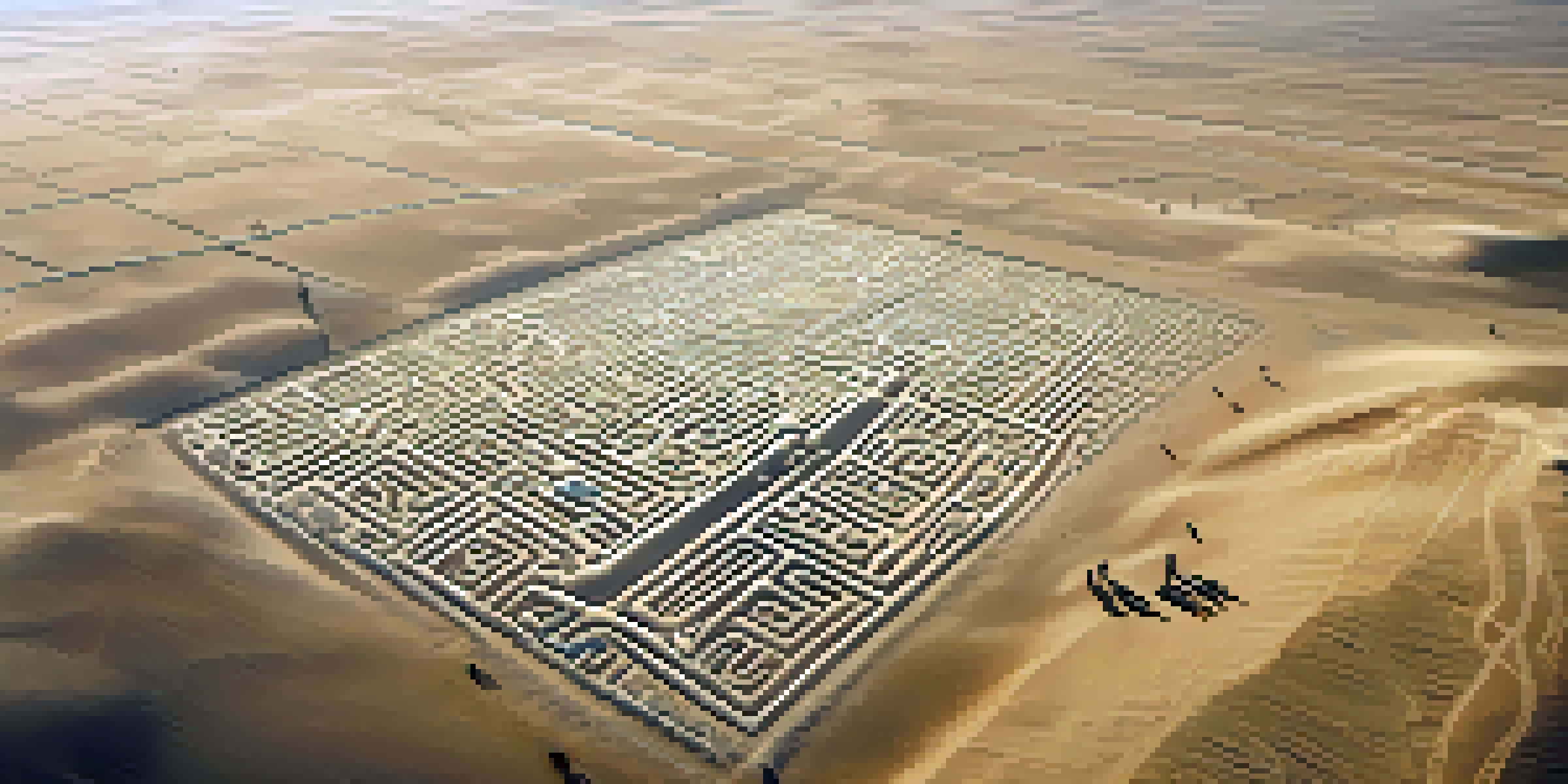Nazca Lines: Ancient Geoglyphs and Their Cultural Impact

What Are the Nazca Lines? Understanding the Geoglyphs
The Nazca Lines are a series of enormous geoglyphs etched into the desert floor of southern Peru. Spanning nearly 1,000 square kilometers, these designs range from simple lines to intricate figures of animals and plants. Created by the Nazca culture between 500 BCE and 500 CE, their purpose has puzzled researchers for decades. Some believe they were ceremonial pathways, while others think they served astronomical functions.
The lines are a mystery, but they also tell us about the people who created them and their understanding of the world.
One of the most famous figures is the hummingbird, which stretches over 100 feet long. These geoglyphs are best viewed from the sky, making it a mystery how the Nazca people created such precise designs without aerial technology. The vastness and scale of the lines highlight the creativity and engineering skills of the Nazca civilization, showcasing their unique relationship with the environment.
In addition to their impressive size, the Nazca Lines are also notable for their preservation. The dry climate of the Nazca Desert has helped protect these geoglyphs for centuries, allowing us to marvel at them today. As we delve deeper into their meaning, we uncover layers of cultural significance that continue to resonate with us.
Theories Behind the Creation of the Nazca Lines
Scholars have proposed various theories regarding the creation of the Nazca Lines, each offering a glimpse into the Nazca civilization's beliefs and practices. One prominent theory suggests that these geoglyphs were part of a religious ritual, created to communicate with the gods or to mark ceremonial pathways. This connection to spirituality hints at a society deeply intertwined with their beliefs about the cosmos.

Another fascinating theory posits that the Nazca Lines served an astronomical purpose, potentially aligning with celestial bodies and aiding agricultural practices. Some researchers argue that the designs may have been used to track celestial events, which would have been vital for planting and harvesting crops. This blend of art and science demonstrates the Nazca people's understanding of their environment.
Nazca Lines: Ancient Geoglyphs
The Nazca Lines are enormous geoglyphs in southern Peru, created by the Nazca culture between 500 BCE and 500 CE, with purposes that remain a mystery.
Despite the various theories, the true purpose of the Nazca Lines remains a mystery. Each hypothesis invites us to imagine the daily lives and aspirations of the Nazca people, encouraging a deeper appreciation for their cultural legacy. The ongoing debate keeps the lines relevant in academic circles and among enthusiasts alike.
Cultural Significance of the Nazca Lines
The Nazca Lines hold immense cultural significance, not only for the Nazca civilization but also for modern society. These geoglyphs represent a unique form of artistic expression that transcends time, capturing the imaginations of people around the world. They remind us of the creativity and ingenuity of ancient cultures, inspiring contemporary artists and scholars to explore similar themes.
The Nazca Lines are a testament to the ingenuity of ancient civilizations and their connection to the cosmos.
Moreover, the lines have become a symbol of Peru's rich cultural heritage, drawing tourists and researchers alike to the region. This influx has provided economic benefits to local communities, highlighting the importance of preserving such historical sites. The lines have transformed into a global phenomenon, representing the intersection of history and modern tourism.
As we engage with the Nazca Lines, we also reflect on the broader implications of cultural heritage. They serve as a reminder of our shared human experience and the stories that connect us across time and space. This cultural significance continues to foster appreciation for indigenous histories and the importance of safeguarding these treasures for future generations.
The Nazca Lines and Modern Technology
In recent years, modern technology has played a pivotal role in studying the Nazca Lines, providing new insights into their creation and preservation. Aerial photography and satellite imagery have allowed researchers to map the geoglyphs with unprecedented detail. This technological advancement has illuminated previously unknown features and helped identify patterns in the designs.
Additionally, drones have emerged as a valuable tool in exploring the lines from various angles, enhancing our understanding of their scale and complexity. This innovative approach not only aids in research but also allows us to share the beauty of the Nazca Lines with a global audience. The marriage of ancient art with cutting-edge technology creates a fascinating dialogue about the past and present.
Cultural Impact and Preservation
These geoglyphs are not only a significant cultural heritage symbol for Peru but also face challenges from tourism and climate change, necessitating preservation efforts.
However, the use of technology also raises questions about the preservation of these ancient geoglyphs. As tourism increases, so does the need for sustainable practices to protect these fragile designs. Balancing modern exploration with conservation efforts is essential to ensuring the Nazca Lines remain a source of wonder for generations to come.
Preservation Efforts for the Nazca Lines
Preserving the Nazca Lines is paramount to safeguarding this cultural treasure for future generations. Various organizations and local governments have implemented measures to protect the geoglyphs from environmental threats and human activity. These efforts include creating buffer zones around the lines and restricting access to sensitive areas.
Moreover, educational programs aimed at raising awareness about the importance of the Nazca Lines have gained traction. By engaging local communities and tourists alike, these initiatives foster a sense of stewardship and responsibility towards preserving this unique heritage. The more we understand its value, the more likely we are to protect it.
Despite these efforts, challenges remain. Climate change poses a significant threat, as shifting weather patterns can erode the delicate landscape. The ongoing collaboration between scientists, local communities, and conservationists is essential to develop innovative strategies for preserving the Nazca Lines in an ever-changing world.
Tourism and the Nazca Lines: Balancing Benefits and Risks
Tourism has transformed the Nazca Lines into a global attraction, bringing economic benefits to the region. Visitors flock to Peru to witness these enigmatic geoglyphs, contributing to local economies through guided tours, accommodations, and souvenirs. This influx of tourists has created job opportunities and increased global interest in Peru's cultural heritage.
However, the rise in tourism also presents risks, including potential damage to the geoglyphs. Increased foot traffic and development can lead to erosion and degradation of the delicate desert surface. It's essential to find a balance between promoting tourism and protecting these ancient designs, ensuring that the lines remain intact for future visitors to enjoy.
Modern Technology's Role
Advancements in technology, such as aerial photography and drones, enhance our understanding of the Nazca Lines while raising concerns about their preservation amid increased tourism.
To mitigate risks, responsible tourism practices are necessary. This includes educating tourists about the significance of the Nazca Lines and promoting respectful behaviors, such as staying on designated paths. By fostering a culture of respect and awareness, we can ensure that the Nazca Lines continue to inspire awe without compromising their integrity.
The Nazca Lines in Popular Culture and Media
The Nazca Lines have captured the imagination of artists, filmmakers, and writers, embedding them in popular culture. Their mysterious allure has inspired countless documentaries, books, and movies, often exploring themes of ancient civilizations and extraterrestrial theories. This fascination with the lines reflects our innate curiosity about the unknown and our desire to connect with history.
Additionally, the geoglyphs have become a symbol of the broader quest to understand human civilization's past. They represent not only the artistic achievements of the Nazca people but also the universal human desire to leave a mark on the world. This connection to our shared history makes the Nazca Lines relevant in contemporary discussions about culture and identity.

As we continue to engage with the Nazca Lines through various media, we also contribute to their legacy. Each representation adds a layer to their story, enriching our understanding of their significance. The lines remind us that history is not static; it evolves as we reinterpret and reimagine the past.